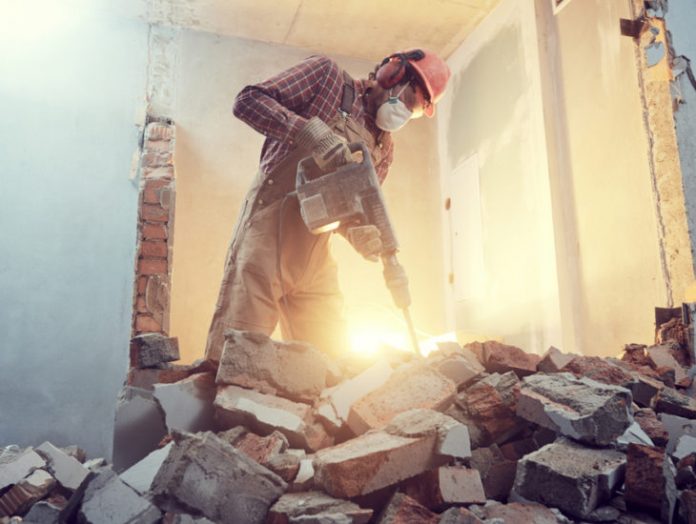Renovation, be it commercial or residential, can be an exhaustive task, and it can be quite a costly project. If you’re thinking about expanding your living environment, or if you’re tearing down a room to reinvent it completely, you need to prepare both financially and logistically in order to avoid wasting resources, and conduct a smooth renovation project from start to finish.
However, there is a whole other problem many homeowners don’t consider early on, and that is the problem of dust and debris accumulation. Through the reconstruction project, the materials and construction processes you use will inevitably produce various toxic compounds, ranging from VOCs, lead, asbestos, to dust and debris that will penetrate the very foundation of your home and the entirety of your living environment. Here are the five steps to prevent this and keep dust and debris under control.
1.Understand the dangers of dust and debris
What’s the big deal, right? You’ll just get a mop and some cleaning agent and tidy up the house once the renovations are over. Well, that might not be such a good long-term idea. First off, there is no way that you can successfully eliminate all of the hazardous particles form the fabrics on the furniture, or the various nooks and crannies where they might have hidden during the construction process. And secondly, allowing these particles to accumulate can lead to numerous health issues in the long term.
Because many dust particles and toxic compounds will become airborne, you will inevitably inhale them, which may cause irritation, inflammation, and long-term respiratory issues. If you’re working with lead, you should definitely wear protective oxygen masks because lead fumes are highly toxic. And if you’re working with sand, rock, or mineral ores, you will let dangerous particles of silica into your living environment, which will cause silicosis.
2.Factor debris containment into your budget
Now that you understand the dangers, you can start reworking your renovation budget so that it accommodates the costs of dust and debris control, sanitation, and elimination. Don’t set these costs aside, but rather integrate them into the preliminary stages of the project so that you can allocate enough resources for protective equipment, machinery, transportation, disposal, and more.
Always have a contingency plan in place, and set aside at least 10% more for unexpected expenses, especially when you’re calculating the amount of debris your project is going to produce – chances are that it will be more than you’ve initially thought. Talk to your contractor to gain a better insight into the scope of the entire project, with a focus on efficient and effective waste management and removal.
3.Take the furniture out of the house
Now, you can’t avoid or prevent the production or accumulation of waste, dust, debris, and other potentially dangerous particles, but you can prevent these compounds from polluting the most important parts of your living environment. These are of course, the furniture and other appliances and amenities you can easily transport into a safe storage space.
And that’s exactly what you should do. Hiring a truck to haul your stuff to a storage unit is a cost-effective solution, especially if you turn to affordable solutions such as Budget truck rental services and find a truck or van that fits your needs and can easily accommodate all of the furniture and essentials that you plan to move to your storage unit. Now that all of your precious stuff is out of the house, you can start covering up the things you can’t move, and not worry about any toxic elements penetrating the material.
4.Protect the floor and all stationary features
It’s important to cover up all of the things you can’t get out of the house in order to protect them from spills, accidental dings and scratches, and of course, to prevent hazardous particles from settling into their various nooks and crannies. To do this successfully, you will need tarpaulin, and lots of it.
Tarp is one of the best and most durable sheeting materials out there, and it’s frequently used in home renovation, and for a number of compelling reasons. Use heavy-duty tarp to protect your floors, and cover all of the areas in your home that you’re not remodeling. Let the dust and debris accumulate on the tarp, and then simply wash it off when you’re done.
5.Try to do everything outside
And finally, strive to localize waste production and accumulation outside. Remember, there’s no reason why you would want to prep the mortar, or do any of the cutting and welding inside – except if you want to make a complete mess of the place. Instead, move these and all other similar chores into the yard or on the front lawn. Sure, you’ll still make a lot of dust and debris, but at least you won’t pollute your living environment and you will be able to clean everything up easily.
Controlling your work environment as you’re renovating your home will allow you to conduct a smooth and rewarding project, and will help you preserve a healthy living environment in the process. Use these tips to effectively keep toxic compounds at bay from start to finish.
Source: constructionreviewonline




